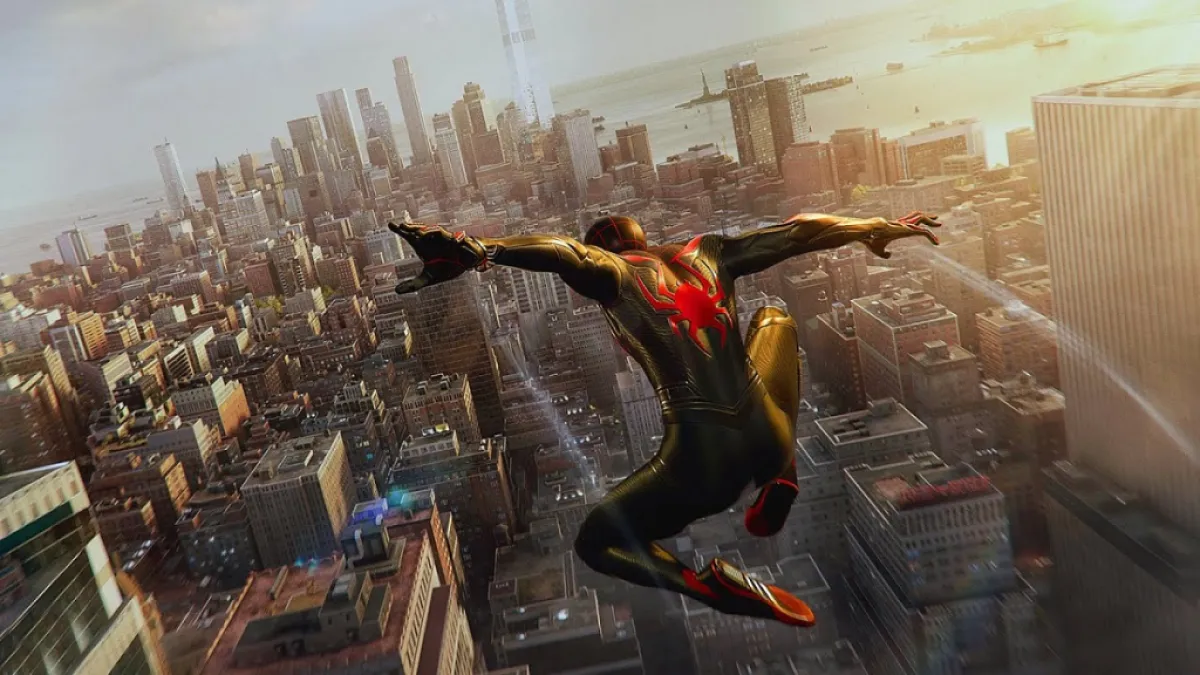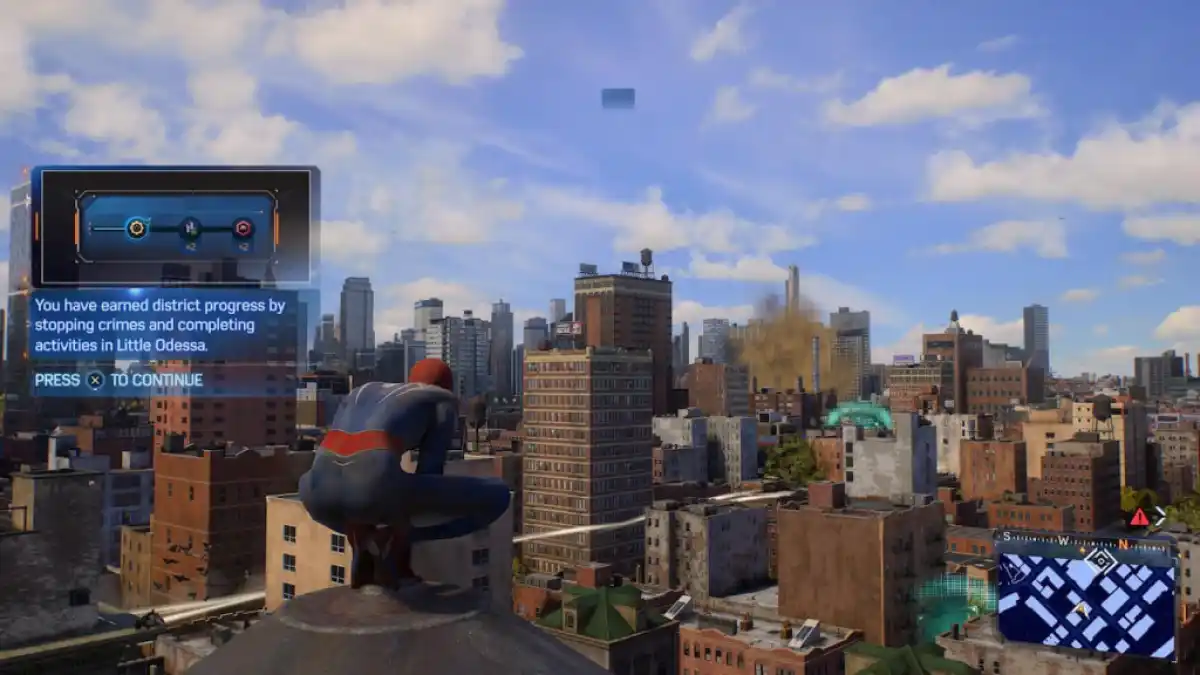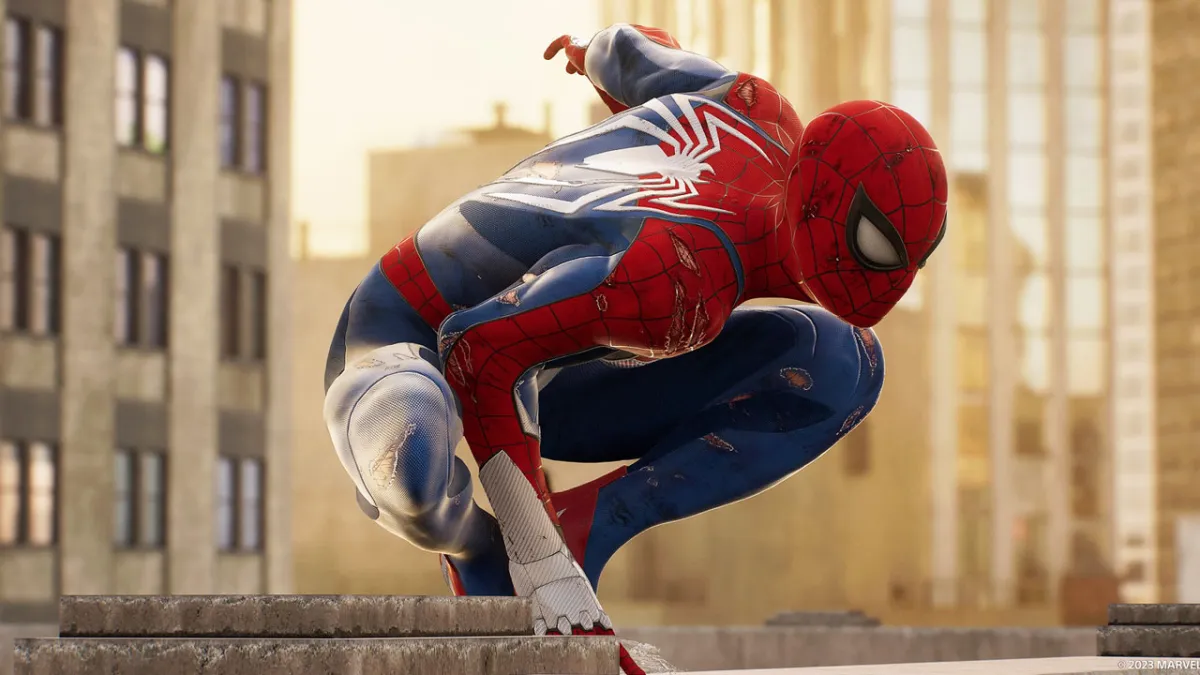Warning: The following article on how Marvel’s Spider-Man 2 is a love letter to New York City contains spoilers for the Insomniac game.
Spider-Man has always had a unique relationship with New York City. There is no other major superhero so firmly anchored to a real location.
Batman and Superman undoubtedly have a similar relationship to Gotham and Metropolis respectively, but those cities do not exist. They are abstractions of New York. As editor Denny O’Neil explained, “Gotham is Manhattan below Fourteenth Street at 3 a.m., November 28 in a cold year. Metropolis is Manhattan between Fourteenth and One Hundred and Tenth Streets on the brightest, sunniest July day of the year.” They are New York as it exists in the popular imagination.
Other Marvel superheroes are based around New York City, because the publisher itself was originally based there and promised readers “the world outside [their] window.” Avengers Manor was in Central Park. Doctor Strange lived in Greenwich Village. Charles Xavier set up his school in Westchester, outside the city. Still, none of those characters are as tied to New York as Spider-Man. The comics are obviously a huge part of it, but adaptations are also important.
Related: Marvel’s Spider-Man 2: When the Game Takes Place on the Timeline

The Sam Raimi Spider-Man movies shot heavily in New York City, folding the World Trade Center into their publicity campaign and featuring a post-9/11 climax in which New York itself stands with Spider-Man (Tobey Maguire). In contrast, the default on-screen adaptation of most of those other characters, the Marvel Cinematic Universe, tends to shoot its films and television shows in Georgia. This can create a sense of disconnect and abstraction from real-life locations.
Insomniac’s recent Spider-Man 2 understands and explores this relationship between the two Spider-Man, Peter Parker (Yuri Lowenthal) and Miles Morales (Nadji Jeter), and the city that they protect. The game has a real sense of place, creating a truly immersive environment. Players have been picking out familiar landmarks, with one even noting that the hospital where his father was born was destroyed by Sandman (Leandro Cano) in the opening set-piece.
Of course, Spider-Man 2 is not a perfect recreation of the city. It overlays fictional landmarks from the comic book world into reality, such as Avengers Tower or the Sanctum Sanctorum. There are also real locations, such as the Chrysler Building, which had to be excluded because “negotiations to use those locations didn’t work out.” As such, the New York City of Spider-Man 2 is not an exact replica of the real urban environment.
This gets at something interesting about New York. It arguably exists as much in the popular imagination as in reality. New York has been captured countless times on film and television, even through stock footage used in movies filmed elsewhere. It’s possible for people who have never been to New York to imagine it simply through absorbing media. For people visiting New York, traversing the urban environment can often feel like moving through one of those multimedia depictions.
This is woven into the narrative fabric of Spider-Man 2, to the point that journalist Robert Leedham has described the game as “a full-blown tourism sim.” One of the game’s primary villains is Sergie Kravinoff (Jim Pirri), a big-game hunter who travels to New York City to stalk his prey through the urban jungle like a demented take on those rich dentists hunting lions in Africa. Mary Jane Watson (Laura Bailey) is reintroduced having written a book on the history of the fictional nation of Symkaria.
However, where Spider-Man 2 differs from other recreations of New York City on film and television is that it is immersive and experiential. The player doesn’t just see images of New York, they can throw themselves into it. This gets at why a Spider-Man game is so perfectly suited to a representation of the urban environment. It also understands that Spider-Man is a character who is particularly suited to inhabit and move through that space.
The emergence of the superhero as a popular archetype coincided with the development of the modern American city. Many superheroes can fly or jump through the urban landscape, allowing them to navigate the increasingly vertical environment unburdened by traffic or crowds. Not only do superheroes tend to occupy a space above the streets and alleys of the American city, they can also handily traverse the glass canyons of high rises and skyscrapers.
Related: Will Marvel’s Spider-Man 2 Get DLC?

As Scott Bukatman has noted, “Through the superhero, we gain a freedom of movement not constrained by the ground-level order imposed by the urban grid.” Dan Hassler-Forest has described the superhero as “a fantasy of overcoming the obvious limitations of the human body within the physically and mentally overpowering vertical landscapes of the modern metropolis.” Characters like Superman are specifically evolved to suit this particularly modern space.
Spider-Man is even more suited to these urban surroundings than a character like Superman or Iron Man. After all, those heroes can fly just as easily over suburbia or small towns as through city skyscrapers. In contrast, Randy Laist has pointed out that Spider-Man’s traditional mode of movement – swinging from web to web, perching on fixed surfaces – “would only be possible in a densely vertical environment such as the southern half of Manhattan.”
Much has been made of the traversal mechanics of Spider-Man 2, which allow the character to swing though the city and even glide on web wings. Insomniac’s earlier Spider-Man games were roundly praised for their web-swinging, with Engadget reviewer Nathan Ingraham describing it as “perhaps the singular best game mechanic I’ve come across in the last decade or so.” The enhancements in Spider-Man 2 have received even more praise, and have been celebrated as “exquisite.”
It’s a cliché to describe a piece of multimedia’s setting as “a character” or “a star”, and that is particularly true of a setting as familiar as New York City. However, Spider-Man 2 is designed in such a way as to make the player aware of their relationship to the urban space. It does this in a number of ways. Some of these are familiar game mechanics, with fetch quests for loot crates or bots encouraging the audience to think about the city’s layout and how they interact with it.
Side-quests like a photo competition for Robbie Robertson or stash house raids for Aaron Davis (Ike Amadi) often find characters reminiscing about their relationships to the shifting urban space, as the player snaps photos of dueling bodega mascots or muses on having the best seats in a stadium that is an obvious non-copyright-infringing stand-in for Madison Square Gardens. Peter flashes back to his first meeting with J. Jonah Jameson (Darin De Paul), who teaches him to be a real New Yorker.
The game also understands New York as an evolving organism. This is obvious even within the game’s story, in which the Financial District is buried under sand for an extended period after Sandman’s attack. “Well, we wanted all of our big events to have that cause and effect, see the aftermath of that,” explained senior creative director Bryan Intihar. “So, whether it’s that mission or others in the game, you’re going to see a sense of cause and effect across the game.”
However, much of New York is experienced through memory. It isn’t just that the city exists at this moment in time. It has a history and a culture. There is a sense of continuity there. One of Miles’ major subplots focuses on the attempt to set up a museum in Harlem that might celebrate the area’s rich cultural heritage. Of course, Miles’ New York is different than that experienced by Peter, who remembers riding his bike through the city or sneaking around his high school.
The city is not just a physical space. It exists in the memories and the experiences of the people who inhabit it. Spider-Man tracks down a disoriented old man whose fading memory retains some primal knowledge of the city’s geography. A dying Howard (Dave Fennoy) asks Spider-Man to sit with him on the west edge of Manhattan and just look out at the scenery. Spider-Man then guides Howard’s pigeons through the city to new home in Astoria, admiring the sights along the way.
In Spider-Man 2, the city is a living and breathing entity. It changes and grows, just like the game’s protagonists. Indeed, the climax of the story finds the city transformed by Venom (Tony Todd). The symbiote has infected and transformed Harry Osborn (Graham Phillips), who was using it to fight his own terminal illness. However, the entity spawns across the city, growing over alleyways and snaking organic tendrils around buildings, a manifestation of Harry’s illness upon the city itself.
Insomniac’s Spider-Man 2 does a wonderful job with its central characters, bringing Spider-Man’s world to life and providing strong arcs for many of its key heroes and villains. However, the game also understands that one of Spider-Man’s most important relationships exists with the city in which he operates. Through its narratives and its mechanics, Spider-Man 2 invites the player to experience that relationship in a compelling and exciting way.






Published: Nov 2, 2023 01:28 pm